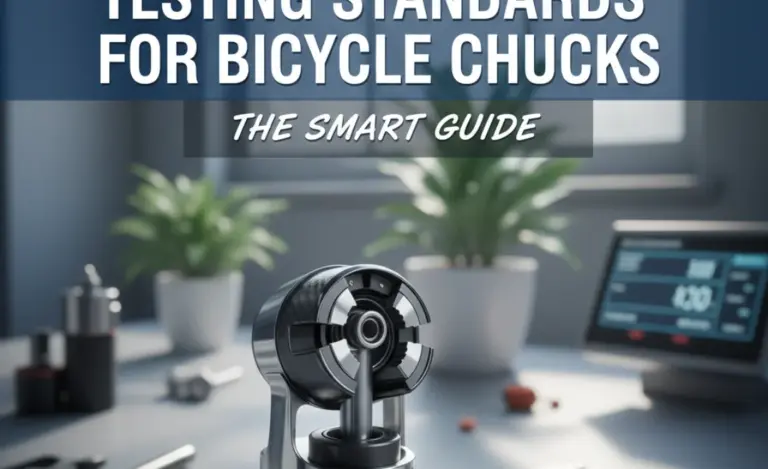How to Use Chuck with Shock Pump: Easy Guide
Using a chuck with your shock pump is easy! First, make sure the chuck is compatible with your pump and suspension valve. Then, thread the chuck onto the valve until snug, but not too tight. Use the pump to inflate to the desired pressure. Finally, carefully unthread the chuck to prevent air loss. Now, your suspension is perfectly dialed in for a smooth ride!
Getting your bike’s suspension dialed in is key for a comfortable and efficient ride. But dealing with those tiny suspension valves can be frustrating. Many riders struggle with leaking air and inaccurate pressure readings when using a standard pump head. The solution? A chuck! A chuck provides a secure, leak-free connection, making it easier than ever to fine-tune your suspension. This guide will walk you through each step, so you can spend less time fiddling and more time riding.
Understanding Shock Pumps and Chucks
Before we dive into the how-to, let’s clarify what we’re working with. A shock pump is a specialized hand pump designed to inflate the air chambers in your bike’s suspension components, like forks and shocks. These pumps deliver high pressure with small volumes of air, allowing for precise adjustments.
A chuck, in this context, is the connection end of the pump hose that attaches to the suspension valve. While some pumps have a built-in chuck, others use a separate, threaded chuck for a more secure fit.
Why Use a Chuck?
Using a separate chuck offers several advantages:
- Reduced Air Loss: A threaded chuck creates a tighter seal, minimizing air loss when connecting and disconnecting the pump.
- Improved Accuracy: The secure connection ensures a more accurate pressure reading.
- Easier Inflation: A good chuck makes it easier to reach the desired pressure without constant readjustment.
- Protection of Valve Core: Minimizes risk of damaging the delicate valve core.
Tools and Materials You’ll Need
To use a chuck with your shock pump, gather these essential tools:
- Shock Pump: A high-quality shock pump with a pressure gauge.
- Threaded Chuck: A compatible threaded chuck for your shock pump. Ensure it matches the valve type on your suspension (usually Schrader).
- Clean Rag: For wiping any dirt or debris from the valve.
- (Optional) Valve Core Tool: For tightening or replacing the valve core if needed.
Step-by-Step Guide: Using a Chuck with a Shock Pump
Follow these simple steps to properly use a chuck with your shock pump:
Step 1: Prepare the Valve
Before connecting anything, inspect the suspension valve for dirt or debris. Use a clean rag to wipe it down. This ensures a clean connection and prevents contamination.
Step 2: Attach the Chuck to the Pump
If your shock pump has a removable hose, thread the chuck onto the end of the hose. Make sure it’s snug, but avoid overtightening. It should be hand-tight only.
Step 3: Connect the Chuck to the Valve
Carefully thread the chuck onto the suspension valve. Again, tighten it until it’s snug. You should feel a secure connection. Avoid using excessive force, as this could damage the valve.
Step 4: Inflate to the Desired Pressure
With the chuck securely attached, begin pumping. Watch the pressure gauge on the shock pump. Inflate the suspension to the pressure recommended by the manufacturer or your personal preference. Use the pump’s bleed valve (if equipped) to fine-tune the pressure.
Step 5: Disconnect the Chuck
This is the most crucial step to prevent air loss. Slowly and carefully unthread the chuck from the valve. A quick, smooth motion is best. Some chucks have a release button; if yours does, press it while unscrewing.
Step 6: Check the Pressure
After disconnecting the chuck, quickly check the pressure again. You might lose a small amount of air during disconnection, but a good chuck will minimize this. If the pressure is significantly lower than your target, repeat steps 3-5.
Troubleshooting Common Issues
Even with the best equipment, you might encounter some issues. Here’s how to troubleshoot them:
- Air Leakage: If you hear air leaking when the chuck is connected, try tightening the connection. If the leak persists, inspect the chuck’s O-rings for damage. Replace them if necessary.
- Incorrect Pressure Readings: Ensure the chuck is fully threaded onto the valve. If the readings are still off, the pump gauge might be faulty. Consider calibrating or replacing the pump.
- Difficulty Connecting: If you struggle to thread the chuck onto the valve, check for damaged threads. Clean the threads on both the chuck and the valve. A small amount of silicone grease can also help.
Choosing the Right Chuck
Not all chucks are created equal. Here’s what to consider when choosing a chuck for your shock pump:
- Valve Compatibility: Ensure the chuck matches the valve type on your suspension (Schrader or Presta). Most suspension systems use Schrader valves.
- Thread Type: Check that the chuck’s thread matches the thread on your pump hose.
- Build Quality: Look for a chuck made from durable materials like aluminum or brass.
- Ease of Use: Choose a chuck that’s easy to grip and thread onto the valve.
Maintaining Your Shock Pump and Chuck
Proper maintenance will extend the life of your shock pump and chuck. Here are some tips:
- Clean Regularly: Wipe down the pump and chuck with a clean rag after each use.
- Inspect O-rings: Regularly check the O-rings on the chuck for wear or damage. Replace them as needed.
- Store Properly: Store the pump and chuck in a clean, dry place.
- Lubricate Threads: Apply a small amount of silicone grease to the chuck threads to keep them smooth.
Table: Recommended Shock Pumps
| Pump Name | Key Features | Price Range |
|---|---|---|
| RockShox Digital High-Pressure Shock Pump | Digital gauge, precise pressure adjustments | $50-$70 |
| Topeak PocketShock DXG | Compact, durable, good for travel | $40-$60 |
| Lezyne Digital Shock Drive | Digital gauge, high accuracy, aluminum construction | $60-$80 |
| SKS Germany Shockblade Suspension Pump | Ergonomic handle, precise pressure control | $35-$55 |
Table: Troubleshooting Guide
| Problem | Possible Cause | Solution |
|---|---|---|
| Air Leakage | Loose connection, damaged O-rings | Tighten chuck, replace O-rings |
| Incorrect Pressure | Faulty gauge, improper connection | Calibrate/replace pump, ensure tight connection |
| Difficult Connection | Damaged threads, dirt/debris | Clean threads, apply silicone grease |
| Pump not building pressure | Worn pump seals | Replace pump seals or entire pump |
External Resources
FAQs
1. What is the difference between a Schrader and Presta valve?
Schrader valves are wider and have a spring-loaded pin in the center, similar to car tire valves. Presta valves are narrower and have a lock ring at the tip that needs to be unscrewed before inflating.
2. Can I use a regular tire pump for my suspension?
No, regular tire pumps deliver too much air volume at low pressure. Shock pumps are designed for high pressure and low volume, allowing for precise adjustments.
3. How often should I check my suspension pressure?
Check your suspension pressure before each ride, especially if you’re riding frequently or in demanding terrain. Also, check after any significant temperature changes.
4. What does PSI mean?
PSI stands for pounds per square inch, a unit of pressure measurement.
5. How do I know what pressure to put in my suspension?
Refer to the suspension manufacturer’s recommendations. Most manufacturers provide charts based on rider weight and riding style. You can also fine-tune the pressure based on your personal preferences.
6. What if my shock pump doesn’t have a bleed valve?
A bleed valve allows you to release small amounts of air for precise pressure adjustments. If your pump lacks one, you’ll need to be extra careful when inflating to avoid overshooting your target pressure.
7. Can I use a chuck on my tubeless tires?
While some chucks can be used on tubeless tires, it’s best to use a chuck specifically designed for tubeless valves to ensure a secure seal and prevent sealant leakage.
Conclusion
Using a chuck with your shock pump might seem like a small detail, but it can make a big difference in your suspension setup. By following these steps and tips, you’ll be able to achieve accurate and consistent pressure readings, minimize air loss, and fine-tune your suspension for optimal performance. So go ahead, dial in your ride, and enjoy the trails!


